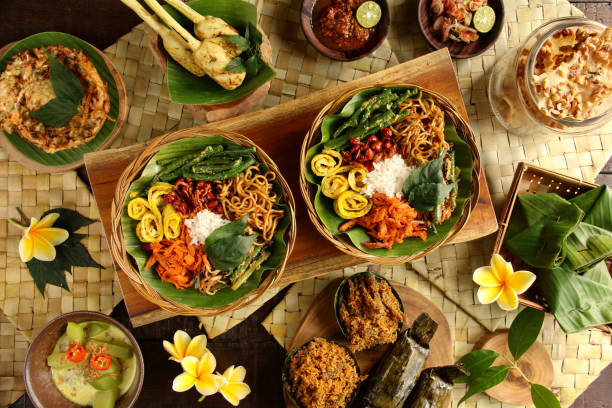Unearthing the Richness of Indonesian Cuisine: A Gastronomic Adventure
Indonesia, a vibrant archipelago with more than 17,000 islands, offers a culinary landscape as diverse as its geography. From spicy rendang to sweet martabak, Indonesian cuisine reflects a rich cultural history and a love for bold flavors. Let's embark on a gastronomic journey to explore this under-celebrated cuisine and its culinary treasures.

The Spice Islands: The Birthplace of Flavor
Indonesia’s vibrant and diverse cuisine is deeply influenced by its history as the world’s original “Spice Islands.” Nutmeg, cloves, and mace, once more precious than gold, were native to these islands. These spices, along with others like turmeric, pepper, and galangal, form the backbone of Indonesian cuisine, lending depth and complexity to its dishes.
Rendang: The World’s Most Delicious Dish
Rendang, a slow-cooked beef curry from West Sumatra, has been voted the world’s most delicious dish by CNN. It’s a testament to the culinary prowess of Indonesian cooks. The meat is slow-cooked in coconut milk and a mixture of lemongrass, galangal, garlic, turmeric, ginger, and chilies, until it is caramelized and almost dry, resulting in a rich, complex, and utterly delicious dish.
The Ubiquitous Nasi Goreng
Nasi Goreng, Indonesian fried rice, is a national staple and a perfect example of the country’s culinary philosophy - simple, flavorful, and satisfying. It’s often served with a fried egg on top and accompanied by pickles, cucumber slices, and prawn crackers.
Sweet Treats: Martabak and Pisang Goreng
Indonesian desserts are a delightful blend of textures and flavors. Martabak, a sweet pancake filled with chocolate, cheese, or nuts, is a favorite street food. Meanwhile, Pisang Goreng, deep-fried bananas, offer a simple yet delicious treat.
The Vivacious Sambal
Sambal is as essential to Indonesian tables as salt is to Western ones. This fiery chili paste, blended with shrimp paste, lime juice, sugar, and salt, is served as a condiment with almost every dish, adding a spicy kick to the meal.
- Indonesia is home to over 5,350 traditional recipes.
- The country’s cuisine is influenced by Indian, Middle Eastern, Chinese, and European cuisines.
- Most Indonesian meals include rice, vegetables, and a source of protein like tofu, tempeh, fish, or meat.
In conclusion, Indonesian cuisine is a treasure trove of flavors and techniques waiting to be discovered. Its diversity reflects the country’s rich cultural heritage, and the use of local ingredients and spices gives each dish a unique character. So, the next time you’re feeling adventurous, why not give Indonesian cuisine a try? You might just find your new favorite dish.






